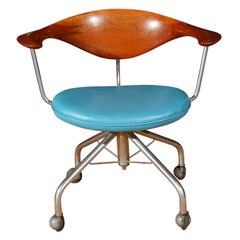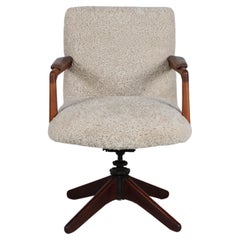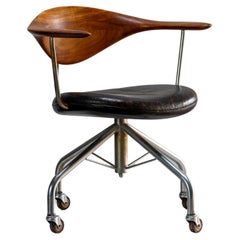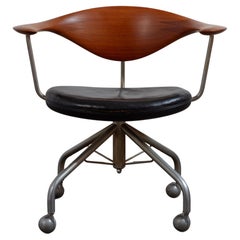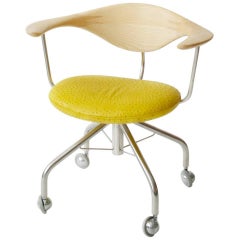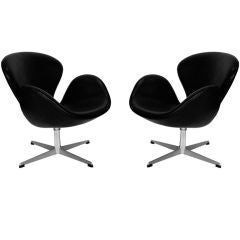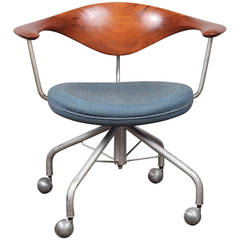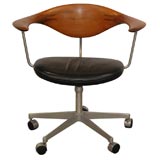Hans Wegner Swivel
Vintage 1950s Danish Swivel Chairs
Chrome
Mid-20th Century Danish Mid-Century Modern Swivel Chairs
Metal
Mid-20th Century Danish Scandinavian Modern Swivel Chairs
Steel
Mid-20th Century Danish Scandinavian Modern Chairs
Steel
Vintage 1950s Danish Scandinavian Modern Office Chairs and Desk Chairs
Leather, Teak
Mid-20th Century Danish Scandinavian Modern Office Chairs and Desk Chairs
Steel, Chrome
Vintage 1970s Danish Swivel Chairs
Vintage 1950s Danish Scandinavian Modern Chairs
20th Century Danish Swivel Chairs
Teak, Leather
Vintage 1950s Danish Office Chairs and Desk Chairs
Vintage 1950s Danish Office Chairs and Desk Chairs
Metal
Vintage 1970s Danish Scandinavian Modern Swivel Chairs
Steel
Vintage 1950s Danish Swivel Chairs
Chrome
Vintage 1950s Danish Scandinavian Modern Office Chairs and Desk Chairs
Mid-20th Century Danish Scandinavian Modern Office Chairs and Desk Chairs
2010s Danish Scandinavian Modern Office Chairs and Desk Chairs
Steel
Vintage 1950s Danish Scandinavian Modern Swivel Chairs
Steel
Vintage 1960s Danish Scandinavian Modern Swivel Chairs
Vintage 1960s Macedonian Scandinavian Modern Swivel Chairs
Papercord, Birch
Vintage 1960s Danish Swivel Chairs
Vintage 1950s Danish Scandinavian Modern Office Chairs and Desk Chairs
Teak, Leather, Bakelite
Mid-20th Century Danish Scandinavian Modern Swivel Chairs
Steel
Vintage 1960s Unknown Mid-Century Modern Swivel Chairs
Steel
Vintage 1960s German Mid-Century Modern Swivel Chairs
Metal
Vintage 1960s Danish Swivel Chairs
Fabric
20th Century Danish Swivel Chairs
Metal
20th Century Danish Mid-Century Modern Swivel Chairs
Fiberglass
20th Century Danish Mid-Century Modern Swivel Chairs
Aluminum
21st Century and Contemporary Danish Scandinavian Modern Office Chairs a...
Hans Wegner Swivel For Sale on 1stDibs
How Much is a Hans Wegner Swivel?
Finding the Right Seating for You
With entire areas of our homes reserved for “sitting rooms,” the value of quality antique and vintage seating cannot be overstated.
Fortunately, the design of side chairs, armchairs and other lounge furniture — since what were, quite literally, the early perches of our ancestors — has evolved considerably.
Among the earliest standard seating furniture were stools. Egyptian stools, for example, designed for one person with no seat back, were x-shaped and typically folded to be tucked away. These rudimentary chairs informed the design of Greek and Roman stools, all of which were a long way from Sori Yanagi's Butterfly stool or Alvar Aalto's Stool 60. In the 18th century and earlier, seats with backs and armrests were largely reserved for high nobility.
The seating of today is more inclusive but the style and placement of chairs can still make a statement. Antique desk chairs and armchairs designed in the style of Louis XV, which eventually included painted furniture and were often made of rare woods, feature prominently curved legs as well as Chinese themes and varied ornaments. Much like the thrones of fairy tales and the regency, elegant lounges crafted in the Louis XV style convey wealth and prestige. In the kitchen, the dining chair placed at the head of the table is typically reserved for the head of the household or a revered guest.
Of course, with luxurious vintage or antique furnishings, every chair can seem like the best seat in the house. Whether your preference is stretching out on a plush sofa, such as the Serpentine, designed by Vladimir Kagan, or cozying up in a vintage wingback chair, there is likely to be a comfy classic or contemporary gem for you on 1stDibs.
With respect to the latest obsessions in design, cane seating has been cropping up everywhere, from sleek armchairs to lounge chairs, while bouclé fabric, a staple of modern furniture design, can be seen in mid-century modern, Scandinavian modern and Hollywood Regency furniture styles.
Admirers of the sophisticated craftsmanship and dark woods frequently associated with mid-century modern seating can find timeless furnishings in our expansive collection of lounge chairs, dining chairs and other items — whether they’re vintage editions or alluring official reproductions of iconic designs from the likes of Hans Wegner or from Charles and Ray Eames. Shop our inventory of Egg chairs, designed in 1958 by Arne Jacobsen, the Florence Knoll lounge chair and more.
No matter your style, the collection of unique chairs, sofas and other seating on 1stDibs is surely worthy of a standing ovation.
- How do I pronounce Hans Wegner?1 Answer1stDibs ExpertMarch 22, 2022To pronounce Hans Wegner, say "Hans VEG-ner." His last name is Danish. Native speakers of the language may say the surname like "VAY-ner," but "VEG-ner" is the standard in English. Find a selection of Hans Wegner furniture on 1stDibs.
- Is Hans Wegner real?1 Answer1stDibs ExpertApril 5, 2022Hans Wegner is indeed a real person. He was a prolific furniture designer affectionately referred to as “the master of the chair”. Throughout his lifetime, he created 500 chairs, all considered masterpieces. Shop a collection of Hans Wegner’s furniture from some of the world’s top sellers on 1stDibs.
- 1stDibs ExpertMarch 22, 2022To identify a Hans Wegner chair, look for hallmarks of his style. Most joints feature mortise and tenon construction, and armrests and seat supports are often hand-sculpted. Nearly all of his chair frames are solid wood. A piece fashioned out of wood composites is unlikely to be genuine. Find a collection of expertly vetted Hans Wegner chairs on 1stDibs.
- 1stDibs ExpertMarch 22, 2022Whether or not Hans Wegner chairs are comfortable is largely a matter of personal opinion. The Danish furniture designer did design his pieces with functionality in mind, striving to craft chairs that users would enjoy sitting in. Many of his chairs built upon traditional designs, such as the Peacock chair inspired by the classic Windsor chair. On 1stDibs, find a large selection of Hans Wegner chairs.
- 1stDibs ExpertMarch 22, 2022Hans J. Wegner was famous for creating chairs and other types of seating. Some of the Danish designer's most well-known pieces include the Papa Bear chair, the Round chair, the Wishbone chair and the China chair. Find a collection of Hans J. Wegner chairs on 1stDibs.
- 1stDibs ExpertNovember 4, 2024To identify Hans Wegner furniture, familiarize yourself with the Danish designer's pieces by conducting some online research. He is particularly well known for his chairs, including the Peacock chair, a throne-like adaptation of the Windsor chair, and the Wishbone chair, which has a distinctive Y-shaped back splat.
Wegner’s comfy Papa Bear chair (1951) is an almost surreally rescaled English wingback chair, while his 1963 Shell chair has a curved surfboard-shaped seat.
Wegner's primary material was wood, so pieces crafted out of composites, plastics or metals are less likely to be by Wegner. Some of his pieces do bear his signature, but not all do. As a result, experts generally recommend having a certified appraiser or experienced antique dealer assist with the identification process.
On 1stDibs, shop a variety of Hans Wegner furniture. - 1stDibs ExpertMarch 22, 2022You can cord a Hans Wegner peacock chair in a number of ways. Traditionally, the chair featured an over-under weave created by first wrapping the seat with vertical pairs of cord running from the back to the front. Then, artisans worked horizontally, pulling the cord through the vertical pairs. However, you can find many other patterns to try online. On 1stDibs, shop a range of Hans Wegner peacock chairs.
- 1stDibs ExpertMarch 22, 2022What pairs well with the CH07 chair by Hans Wegner is largely a matter of personal preference. To keep the eye focused on its dramatic curves, some interior decorators pair it with simple boxy sofas and tables. Feel free to experiment and create your own furniture layouts using the CH07 or shell chair. Find a collection of Hans Wegner CH07 shell chairs on 1stDibs.
Read More
All the Furniture in This Organic Modern Soho Loft Can Be Yours
Andrianna Shamaris has filled her epic new home with pieces of her own design.
20 Inviting Dining Rooms Perfectly Arranged for Entertaining
Top interior designers show — and tell — us how to create delectable spaces for hosting dinner parties.
Nobody Puts This Sunny Sofa in a Corner
With its plush cushions, cane details and dazzlingly colorful back, it’s inviting from every angle.
The 21 Most Popular Mid-Century Modern Chairs
You know the designs, now get the stories about how they came to be.
Fred Rigby’s Modular Seating Can Be Configured in So Many Handy Ways
The plush Cove Slipper 2.5 Seater sofa is just one of many convenient combinations from the London-based maker.
This Chubby-Chic Quilted Stool Stands on Its Own Two Feet
Sam Klemick's cool stool is edgy, cozy and environmentally sustainable all at once.
Is Lionel Jadot the Willy Wonka of Upcycled Belgian Design?
From his massive collaborative workshop in a former paper factory, the designer concocts funky furniture from disused materials, as well as luxe hotel interiors like the new Mix Brussels.
Rock Your Cares Away on This Sunny Hand-Crocheted Swing
The boho-chic Enchanted Forest Swing, handmade by marginalized women from Turkey and Syria, is uplifting in every way.
